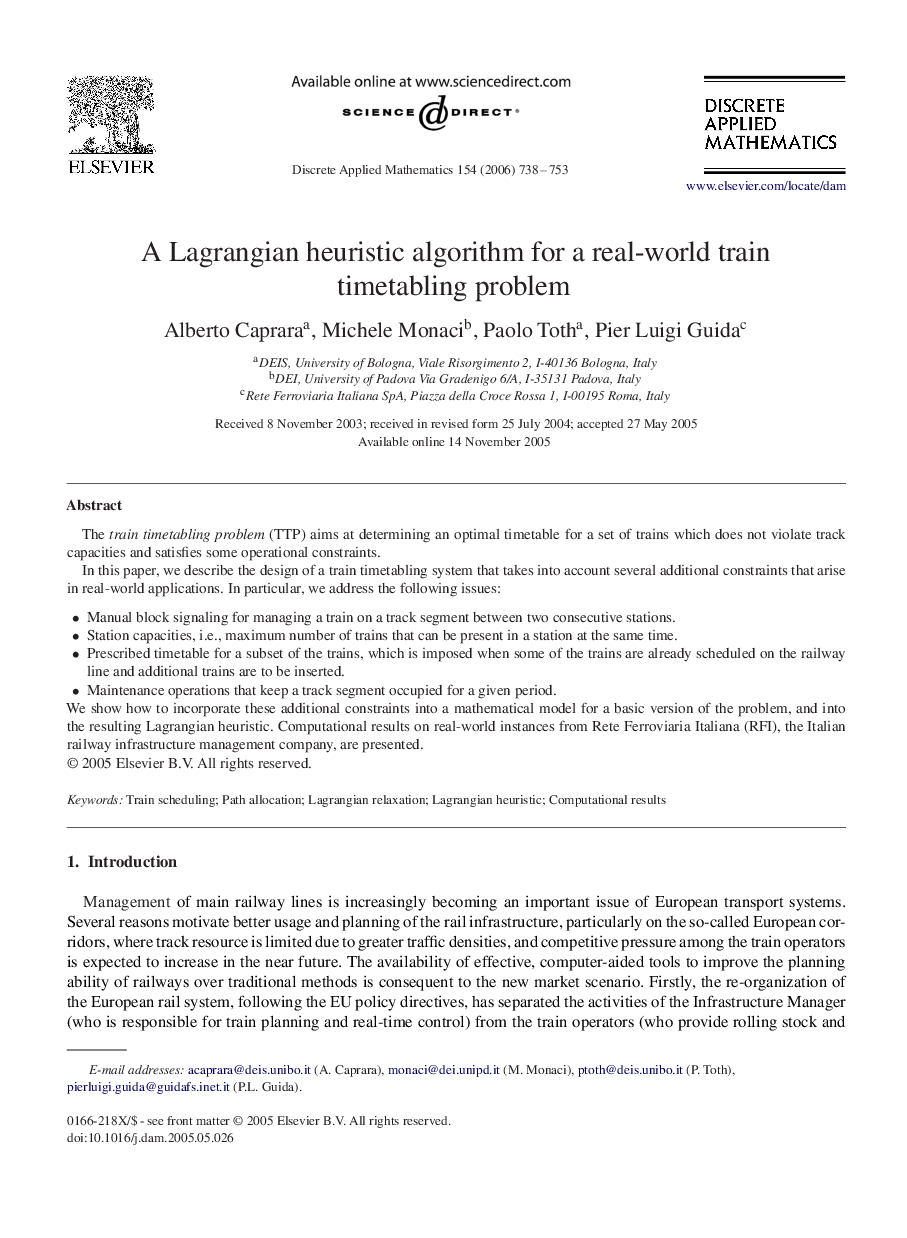| Article ID | Journal | Published Year | Pages | File Type |
|---|---|---|---|---|
| 420857 | Discrete Applied Mathematics | 2006 | 16 Pages |
The train timetabling problem (TTP) aims at determining an optimal timetable for a set of trains which does not violate track capacities and satisfies some operational constraints.In this paper, we describe the design of a train timetabling system that takes into account several additional constraints that arise in real-world applications. In particular, we address the following issues:••Manual block signaling for managing a train on a track segment between two consecutive stations.••Station capacities, i.e., maximum number of trains that can be present in a station at the same time.••Prescribed timetable for a subset of the trains, which is imposed when some of the trains are already scheduled on the railway line and additional trains are to be inserted.••Maintenance operations that keep a track segment occupied for a given period.We show how to incorporate these additional constraints into a mathematical model for a basic version of the problem, and into the resulting Lagrangian heuristic. Computational results on real-world instances from Rete Ferroviaria Italiana (RFI), the Italian railway infrastructure management company, are presented.
